Japanese Lions Dance for Good Luck
Japanese lions dance during the days of new beginnings.
by Bob Kerstetter
Lions dance to push back evil spirits and bring on good luck. They bite heads as they bound into the watching crowds.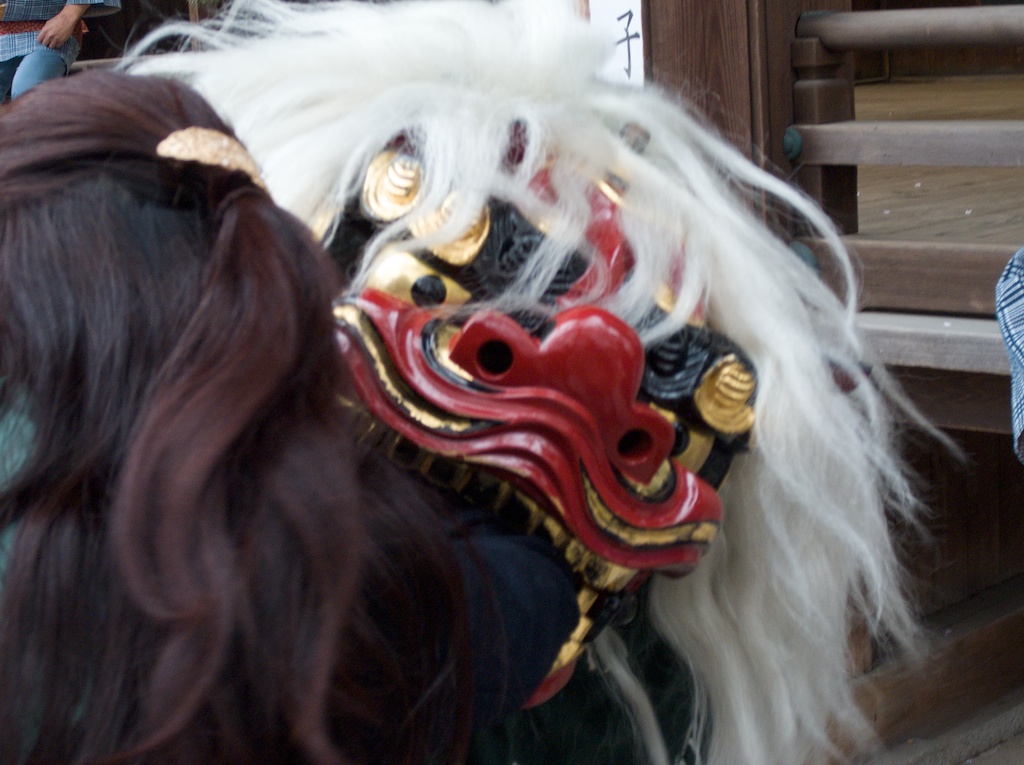
A woman with clean, brushed and styled hair offers her shoulder to a Japanese lion during a lion dance at Yasukuni Shrine. While lion bites to the head bring on good luck, this female lion understands the situation and delivers outstanding fortune through the right shoulder."
Flying Dragon or Dancing Lion?
When a lion dances you pay attention.
At first you may not recognize it as a lion. It could look like a dragon to the uninitiated. Many Westerners think, “flying dragon” when seeing the leaping lion.
Your Japanese friends correct you politely, as if they made the mistake.
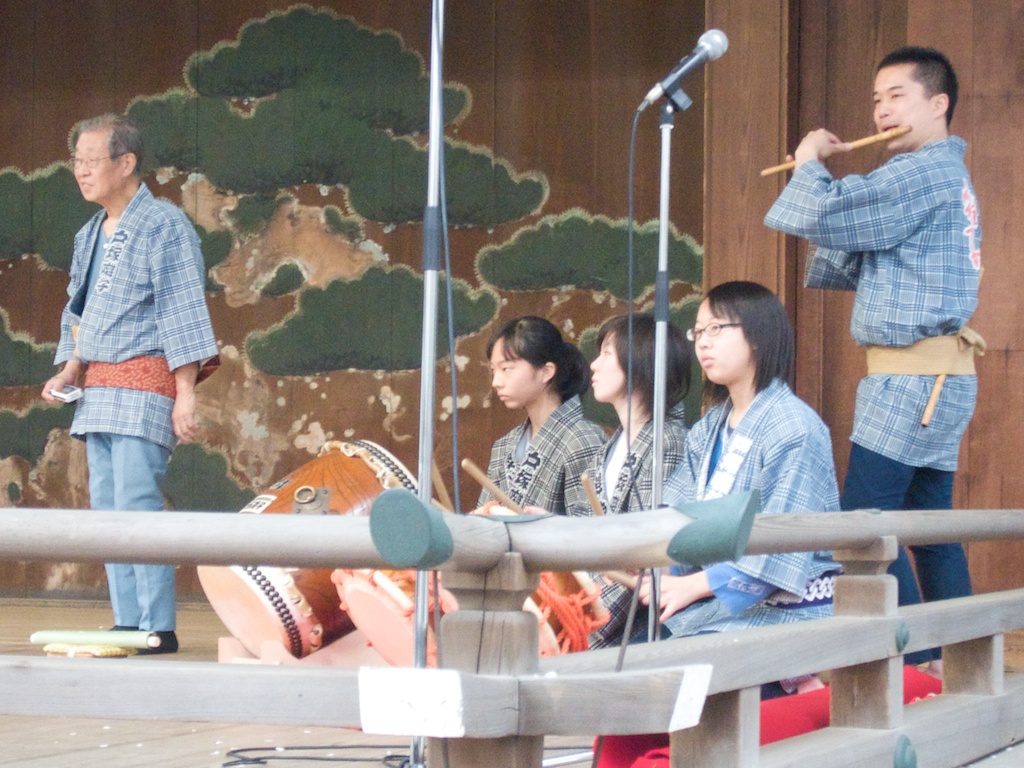
Flute and drum musicians play for a lion dance at Yasukuni Shrine, Tokyo, Japan. The lion races, leaps and lands to the beat of drums.
Driving Off Evil, Dispensing Good Luck
The lion dances around the new year to push away evil spirits and bring on good luck. It runs, vaults, spins and lands to the music of flutes and drums. It hastens around the platform. Taking off. Touching down. Suddenly rushing straight ahead.
When it bounds into the crowd, the people nudge toward the huge feline. This lion goes about on two legs. Larger ones use all four.
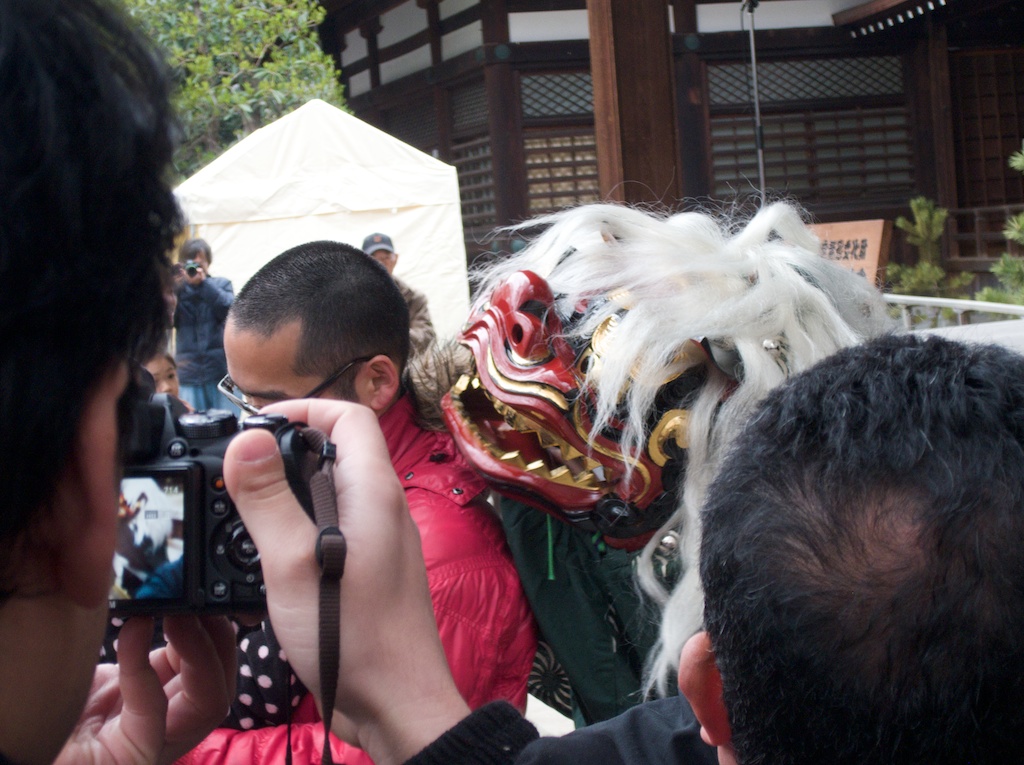
A Japanese Lion—shishi—approaches a man from behind while dancing. According to Shinto belief lion dances drive away evil spirits and bring good luck to those who receive a bite on the head.
Hoping for a Bite to the Head
A man raises up his baby girl. The lion bites her head, then that of her dad. They move away smiling as others take their places.
The lion scurries along the queue, biting bowed heads. A woman with styled hair offers her shoulder. The lion bites. A man from the West raises his arm. Bite! "Lower your head," your Japanese friend laughs. "A bite on your head brings you good luck."
Too late. The lion races on.
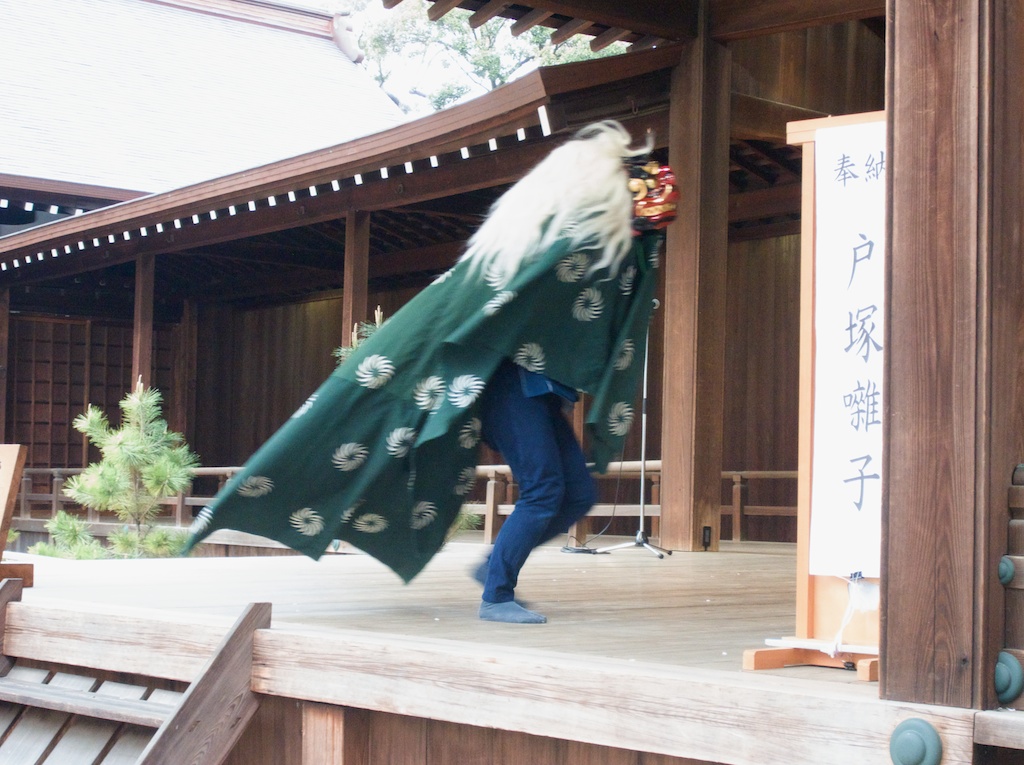
During a lion dance celebration, a Japanese feline races on two feet while chasing away evil and bringing good luck to the visitors of Yasukuni Shrine, Tokyo, Japan. Lion dances occur at times of new beginnings.
Dancing for New Beginnings
Japanese lions dance at least twice a year—once in January, the official calendar New Year and again during Sakura—Cherry Blossom—Season. The coming of sakura marks the beginning of fiscal and academic years. Plus it signals other flowers to come alive for warm weather.
The Japanese call the lion dance shishi-mai—獅子舞—or shiahi-odori—獅踊り. Japan adapted the lion dance from China in ancient times, the date being debatable. Lion dance in Japan is a practice of Shinto, a faith and way of life unique to the Japanese people.
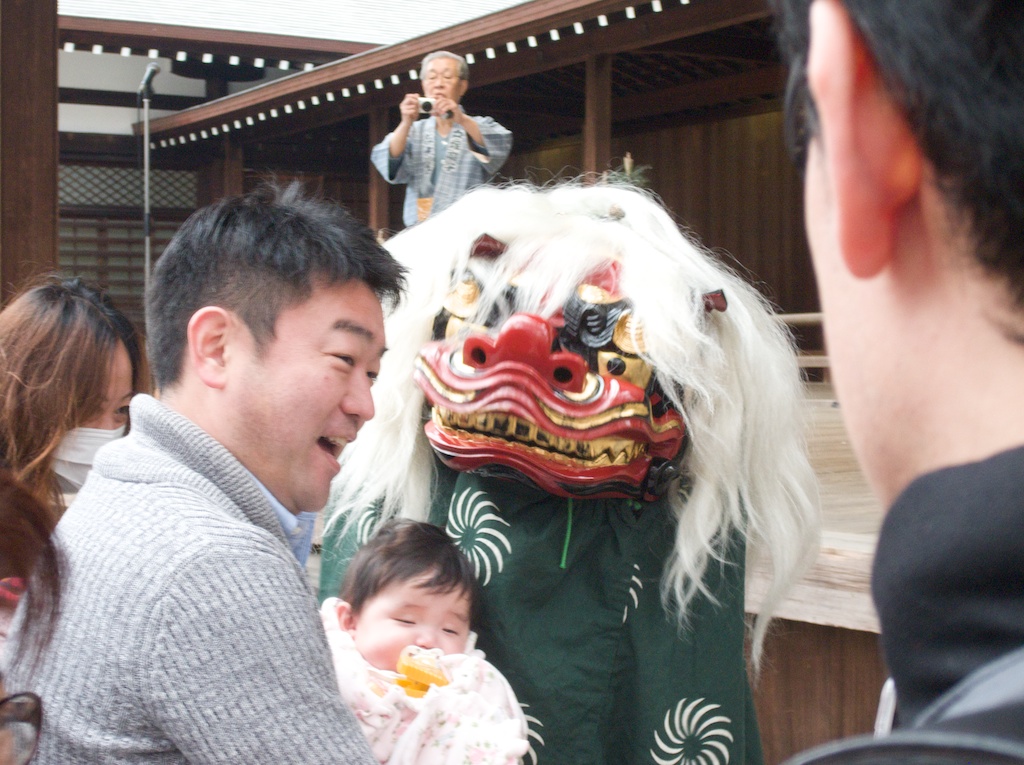
A man raises up his baby girl to the dancing lion. The lion bites her head, then that of her dad. As a result they both can expect good luck for the coming year. This is a lion dance at Yasukuni Shine, Tokyo, Japan.
See more Japan travel articles.